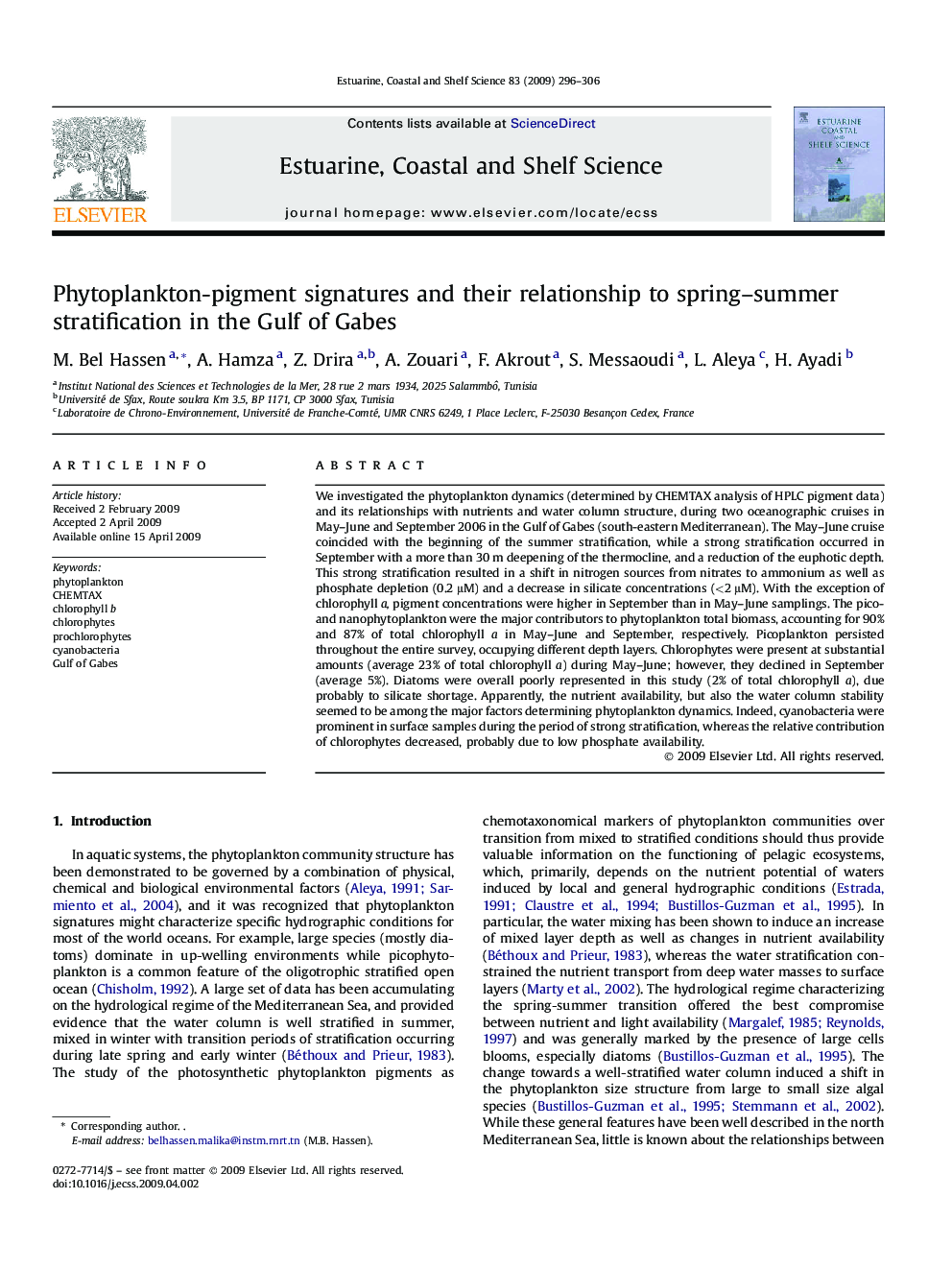| Article ID | Journal | Published Year | Pages | File Type |
|---|---|---|---|---|
| 4541214 | Estuarine, Coastal and Shelf Science | 2009 | 11 Pages |
We investigated the phytoplankton dynamics (determined by CHEMTAX analysis of HPLC pigment data) and its relationships with nutrients and water column structure, during two oceanographic cruises in May–June and September 2006 in the Gulf of Gabes (south-eastern Mediterranean). The May–June cruise coincided with the beginning of the summer stratification, while a strong stratification occurred in September with a more than 30 m deepening of the thermocline, and a reduction of the euphotic depth. This strong stratification resulted in a shift in nitrogen sources from nitrates to ammonium as well as phosphate depletion (0.2 μM) and a decrease in silicate concentrations (<2 μM). With the exception of chlorophyll a, pigment concentrations were higher in September than in May–June samplings. The pico- and nanophytoplankton were the major contributors to phytoplankton total biomass, accounting for 90% and 87% of total chlorophyll a in May–June and September, respectively. Picoplankton persisted throughout the entire survey, occupying different depth layers. Chlorophytes were present at substantial amounts (average 23% of total chlorophyll a) during May–June; however, they declined in September (average 5%). Diatoms were overall poorly represented in this study (2% of total chlorophyll a), due probably to silicate shortage. Apparently, the nutrient availability, but also the water column stability seemed to be among the major factors determining phytoplankton dynamics. Indeed, cyanobacteria were prominent in surface samples during the period of strong stratification, whereas the relative contribution of chlorophytes decreased, probably due to low phosphate availability.
